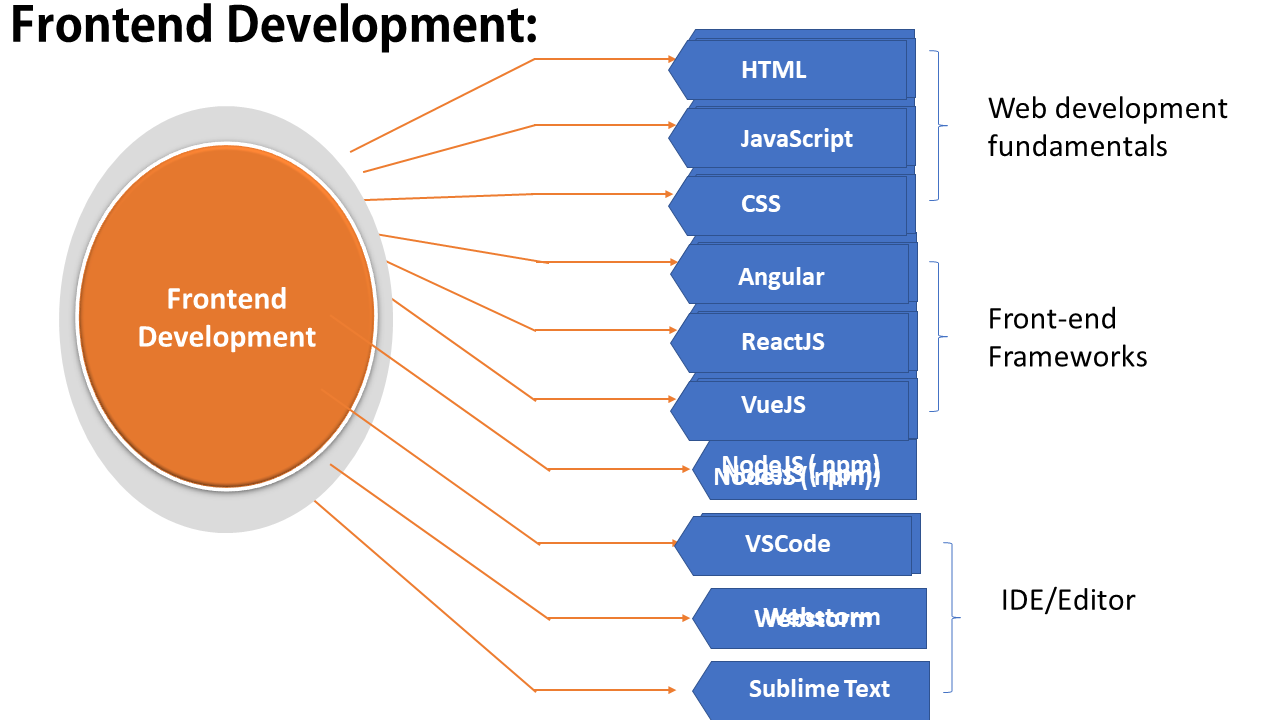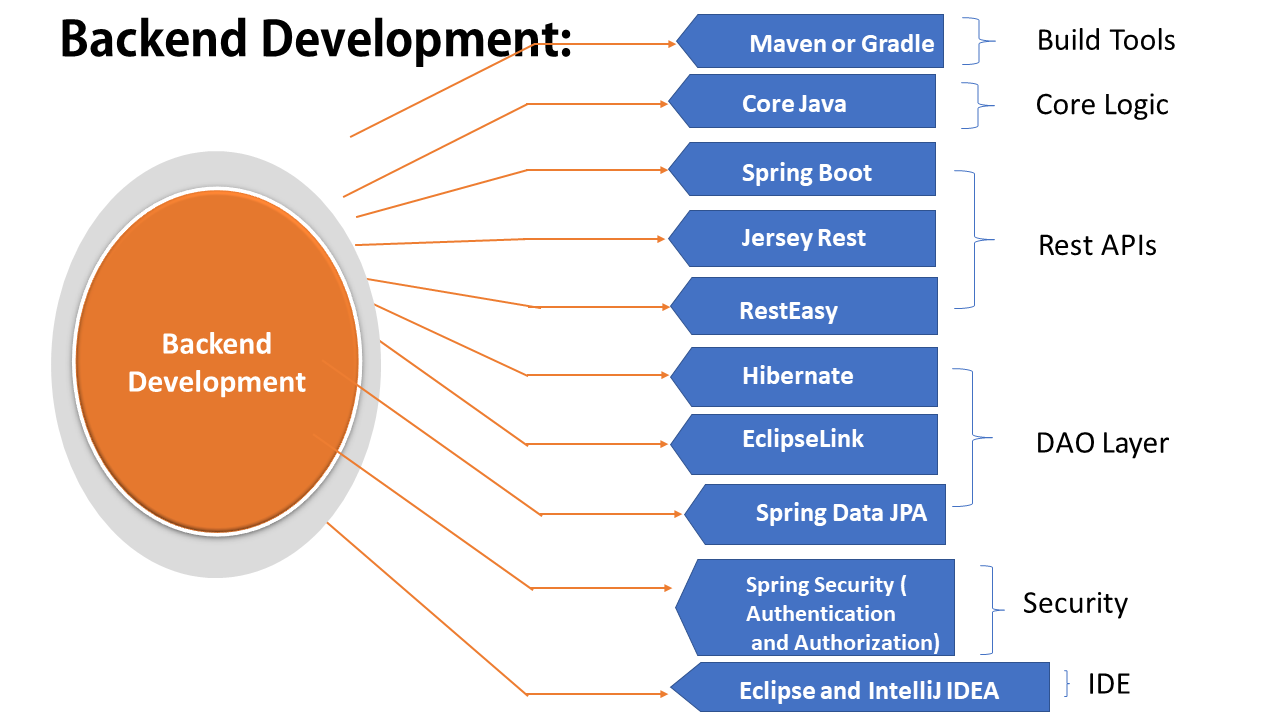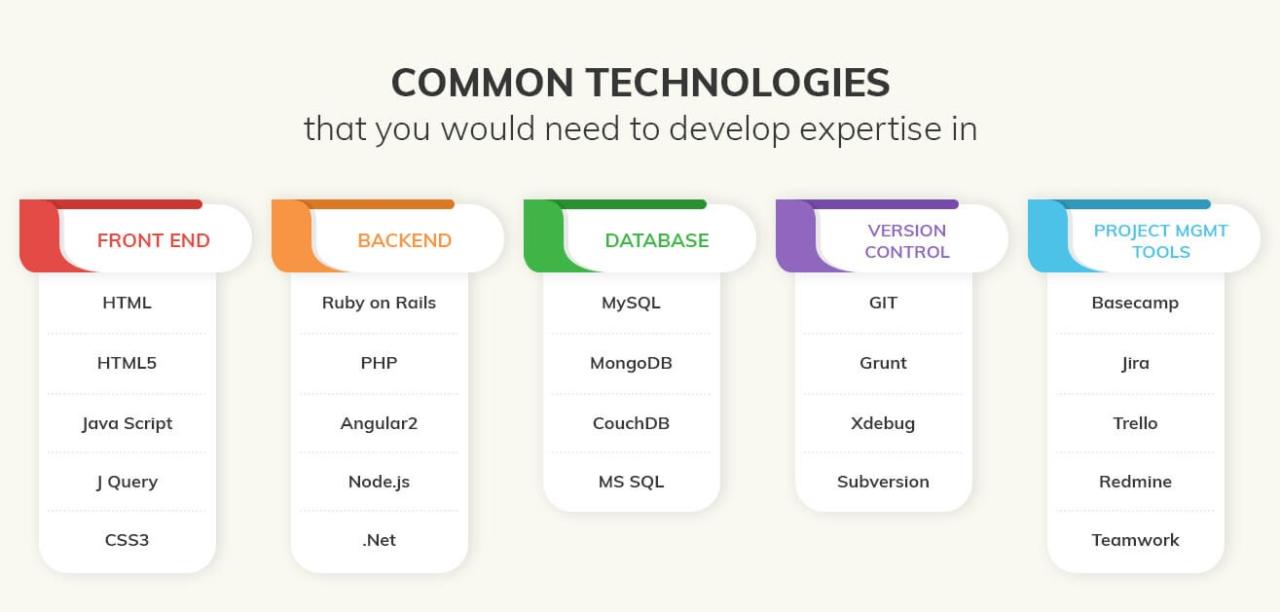Full stack developer career path and required skills are in high demand! This guide breaks down everything you need to know, from mastering front-end technologies like HTML, CSS, and JavaScript to conquering back-end languages such as Python, Java, or Node.js. We’ll explore the crucial role of databases, APIs, and version control, and guide you through the process of testing, debugging, and deploying your applications.
Get ready to navigate the exciting world of full-stack development and discover how to build a successful career in this dynamic field.
We’ll cover essential skills, career progression, and resources to help you on your journey. Understanding both front-end and back-end development is key to becoming a versatile and sought-after full-stack developer. This path isn’t just about coding; it’s about problem-solving, collaboration, and continuous learning. Let’s dive in and explore the possibilities!
Introduction to Full Stack Development
Full-stack development encompasses the entire spectrum of software development, from the user interface (front-end) to the server-side logic and databases (back-end). A full-stack developer possesses a broad skillset, enabling them to handle all aspects of a web application’s creation and maintenance.
Defining Full-Stack Developers
A full-stack developer is a programmer proficient in both front-end and back-end technologies. They can design, build, and deploy complete web applications independently. This involves working with various technologies across the entire application stack.
Roles and Responsibilities of Full-Stack Developers
Full-stack developers wear many hats. Their responsibilities typically include designing user interfaces, developing server-side logic, creating and managing databases, ensuring application security, and deploying and maintaining the application. They often collaborate with designers and other developers, contributing to all phases of the software development lifecycle.
Advantages and Disadvantages of a Full-Stack Developer Career Path
The full-stack path offers significant advantages, including increased versatility and marketability. However, it also demands a wide range of knowledge and continuous learning.
| Advantage | Disadvantage |
|---|---|
| High demand and competitive salaries | Requires extensive learning and continuous upskilling |
| Versatility and ability to work on various aspects of a project | Can lead to burnout due to the broad range of responsibilities |
| Better understanding of the entire application architecture | May not possess deep expertise in any single area |
| Increased job security | Keeping up with evolving technologies can be challenging |
Front-End vs. Back-End Development
| Feature | Front-End Development | Back-End Development |
|---|---|---|
| Focus | User interface and user experience | Server-side logic, databases, and APIs |
| Technologies | HTML, CSS, JavaScript, React, Angular, Vue.js | Python, Java, Node.js, SQL, NoSQL databases |
| Responsibilities | Creating visually appealing and user-friendly interfaces | Handling data storage, processing, and security |
| Output | What the user sees and interacts with | The underlying logic and data management |
Essential Front-End Skills
Front-end development focuses on creating the user interface and user experience of a web application. Mastering core technologies and frameworks is crucial for building interactive and visually appealing websites.
Essential Front-End Technologies
HTML, CSS, and JavaScript form the foundation of front-end development. HTML structures the content, CSS styles its appearance, and JavaScript adds interactivity.
- HTML (HyperText Markup Language): Provides the structure and content of a web page.
- CSS (Cascading Style Sheets): Styles the visual presentation of HTML elements.
- JavaScript: Adds interactivity and dynamic behavior to web pages.
Responsive Design Principles
Responsive design ensures that websites adapt seamlessly to different screen sizes and devices. This involves using flexible layouts, responsive images, and media queries to optimize the user experience across various platforms.
Popular Front-End Frameworks
Frameworks simplify front-end development by providing pre-built components and structures. React, Angular, and Vue.js are popular choices, each with its own strengths and weaknesses.
- React: A JavaScript library for building user interfaces, known for its component-based architecture and virtual DOM.
- Angular: A comprehensive framework for building complex web applications, using TypeScript and a component-based architecture.
- Vue.js: A progressive framework that’s easy to learn and integrate into existing projects, known for its flexibility and simplicity.
Simple Webpage Layout using HTML and CSS
Creating a simple webpage involves structuring the content with HTML and styling it with CSS. For example, a basic webpage with a header, main content, and footer could be created using simple HTML tags and CSS classes to define the styles for each section.
Essential Back-End Skills
Back-end development focuses on the server-side logic, databases, and APIs that power a web application. Understanding core concepts and technologies is crucial for building robust and scalable applications.
So you’re thinking about a full-stack developer career? Awesome! You’ll need skills in front-end (HTML, CSS, JavaScript) and back-end (databases, servers). It’s a demanding but rewarding path, and honestly, sometimes I need a break from all the coding just to unwind, like checking out news about my favorite commentators – I was wondering, for instance, What happened to Wayne Mardle as commentator missing from ?
Anyway, back to coding; mastering frameworks like React or Node.js is crucial for a successful career.
Core Back-End Concepts
Back-end development involves several key concepts that work together to create a functional application. These include databases for storing data, servers for hosting the application, and APIs for communication between different parts of the system.
- Databases: Systems for storing and managing data, crucial for persisting information.
- Servers: Computers that host and serve the application to users.
- APIs (Application Programming Interfaces): Sets of rules and specifications that govern how different software systems communicate.
Popular Back-End Programming Languages
Various programming languages are used for back-end development, each with its own strengths and weaknesses. Python, Java, and Node.js are popular choices.
- Python: Known for its readability and extensive libraries, making it suitable for various back-end tasks.
- Java: A robust and platform-independent language, widely used for enterprise-level applications.
- Node.js: A JavaScript runtime environment that allows developers to use JavaScript for server-side programming.
Databases in Back-End Development
Databases are essential for storing and managing application data. Different database types cater to different needs.
- SQL (Structured Query Language) Databases: Relational databases that organize data into tables with rows and columns (e.g., MySQL, PostgreSQL).
- NoSQL Databases: Non-relational databases that offer more flexibility in data modeling (e.g., MongoDB, Cassandra).
RESTful APIs in Web Application Architecture
RESTful APIs (Representational State Transfer) are a standard architectural style for building web services. They use HTTP methods (GET, POST, PUT, DELETE) to interact with resources, enabling communication between different parts of an application or between different applications.
Version Control and Collaboration
Version control is essential for managing code changes and collaborating effectively with other developers. Git is the most widely used version control system.
Importance of Git
Git allows developers to track changes to their code, revert to previous versions, and collaborate seamlessly on projects. It facilitates efficient code management and minimizes conflicts during collaborative development.
Common Git Commands
Basic Git commands include `git init`, `git add`, `git commit`, `git push`, and `git pull`. More advanced commands manage branches, merges, and conflicts.
Collaborative Platforms (GitHub, GitLab)
Platforms like GitHub and GitLab provide hosting for Git repositories, enabling collaborative code review, issue tracking, and project management.
Simple Git Workflow
A simple Git workflow involves creating a repository, staging changes, committing changes with descriptive messages, and pushing changes to a remote repository. Branching and merging are used for more complex projects.
Testing and Debugging
Thorough testing and effective debugging are crucial for building high-quality software. Various testing methods and debugging strategies help identify and resolve issues.
Importance of Testing
Testing ensures that software functions correctly, meets requirements, and is free from bugs. It helps prevent costly errors and improves the overall quality and reliability of the application.
Types of Software Testing
Different testing types target various aspects of the software. Unit testing verifies individual components, integration testing checks interactions between components, and end-to-end testing assesses the entire system.
- Unit Testing: Testing individual units or components of code.
- Integration Testing: Testing the interaction between different units or components.
- End-to-End Testing: Testing the entire system from start to finish.
Effective Debugging Techniques
Debugging involves systematically identifying and resolving errors in code. Techniques include using debuggers, logging, and code analysis tools.
So you want to be a full-stack developer? That’s awesome! It’s a challenging but rewarding path needing skills in front-end (like React) and back-end (like Node.js) development, databases, and more. To make sure you’re learning the right stuff, check out this guide on choosing the right IT courses based on career goals to plan your learning effectively.
This will help you build a solid foundation for your full-stack developer journey, ensuring you acquire the necessary skills for success.
Simple Testing Plan
A simple testing plan for a hypothetical web application would involve defining test cases for different functionalities, such as user registration, login, and data retrieval. This plan would specify the test environment, test data, and expected outcomes.
Deployment and Hosting
Deploying and hosting a web application involves making it accessible to users. Various strategies and platforms are available, each with its own advantages and disadvantages.
Deployment Strategies
Deployment strategies involve the process of releasing the application to a production environment. Common strategies include continuous integration/continuous deployment (CI/CD) and rolling deployments.
Hosting Platforms
Hosting platforms provide the infrastructure for running web applications. Cloud hosting offers scalability and flexibility, while dedicated servers provide more control.
- Cloud Hosting (AWS, Google Cloud, Azure): Scalable and cost-effective, ideal for various application sizes.
- Dedicated Servers: Offer greater control and customization but require more management.
Deploying a Simple Web Application
Deploying a simple web application typically involves packaging the code, configuring the server, and uploading the application files to the hosting platform. The specific steps vary depending on the chosen platform and technologies.
Step-by-Step Deployment Guide (Example using a Cloud Platform)
A step-by-step guide for deploying a simple application to a cloud platform (e.g., AWS) would involve creating an instance, configuring the server, uploading the application code, and configuring a domain name.
Career Progression and Advancement

A full-stack developer career path offers various opportunities for advancement, depending on individual skills and interests. Senior roles often involve leadership and architectural responsibilities.
Career Paths for Full-Stack Developers
Full-stack developers can specialize in specific areas, such as front-end architecture, back-end engineering, or DevOps. They can also progress into leadership roles, such as team lead or technical architect.
Skills for Advancement

Advancement often requires developing expertise in specific technologies, mastering architectural design principles, and honing leadership and communication skills.
So you want to be a full-stack developer? That means mastering front-end and back-end technologies, plus databases and APIs – it’s a challenging but rewarding path! Need a break from coding? Check out the exciting game, Tune In: Virginia Tech vs. Minnesota , before diving back into learning Node.js or React. Remember, consistent effort and a solid grasp of fundamental concepts are key to a successful career.
Senior-Level Full-Stack Developer Roles
Senior roles involve leading teams, designing complex systems, mentoring junior developers, and making strategic technical decisions. They often require deep expertise in multiple technologies and a strong understanding of software architecture.
Career Progression Stages
| Stage | Responsibilities | Skills |
|---|---|---|
| Junior Full-Stack Developer | Develops features under supervision, follows established guidelines | Basic front-end and back-end skills, understanding of version control |
| Mid-Level Full-Stack Developer | Develops features independently, designs solutions, participates in code reviews | Proficient in front-end and back-end technologies, experience with testing and debugging |
| Senior Full-Stack Developer | Leads projects, designs complex systems, mentors junior developers, makes technical decisions | Expert-level skills, deep understanding of architecture, leadership and communication skills |
Further Learning and Resources
Continuous learning is essential in the ever-evolving field of full-stack development. Numerous resources are available to help aspiring and experienced developers stay up-to-date.
Online Learning Platforms
Several reputable online platforms offer courses and tutorials on full-stack development. Examples include Coursera, Udemy, freeCodeCamp, and Codecademy.
Staying Updated with Latest Technologies
Staying current involves following industry blogs, attending conferences, and participating in online communities. Reading technical documentation and experimenting with new technologies are also important.
Importance of Continuous Learning, Full stack developer career path and required skills
The tech landscape is constantly changing, making continuous learning crucial for maintaining competitiveness and staying relevant. New frameworks, libraries, and tools emerge regularly, requiring developers to adapt and acquire new skills.
Recommended Learning Path

A recommended learning path for aspiring full-stack developers might start with fundamental web development concepts (HTML, CSS, JavaScript), followed by learning a back-end language and framework, and then exploring databases, APIs, and deployment strategies.
- Learn HTML, CSS, and JavaScript fundamentals.
- Choose a back-end language (e.g., Python, Java, Node.js) and framework.
- Learn about databases (SQL and NoSQL).
- Understand RESTful APIs and their use in web applications.
- Master Git and version control.
- Learn testing and debugging techniques.
- Practice building and deploying web applications.
Final Conclusion: Full Stack Developer Career Path And Required Skills

Becoming a successful full-stack developer requires dedication, continuous learning, and a passion for building innovative web applications. By mastering both front-end and back-end technologies, understanding version control, and honing your testing and debugging skills, you’ll be well-equipped to navigate the ever-evolving landscape of web development. Remember to leverage online resources, stay updated with the latest trends, and actively contribute to the developer community to enhance your skills and career prospects.
The journey might be challenging, but the rewards are immense – a fulfilling career building the digital world around us.
Quick FAQs
What’s the average salary for a full-stack developer?
Salaries vary widely based on experience, location, and company size. Expect a range from entry-level to significantly higher for senior roles.
How long does it take to become a full-stack developer?
It depends on your prior experience and learning pace. Bootcamps offer intensive programs, while self-learning can take longer, potentially a year or more of dedicated effort.
Which full-stack development framework should I learn first?
There’s no single “best” framework. React, Angular, and Vue.js are popular choices on the front-end, while Node.js, Python (with Django/Flask), and Java are common on the back-end. Choose one based on your interests and project goals.
Is a computer science degree necessary?
While a degree can be beneficial, it’s not strictly required. Many successful full-stack developers are self-taught or have learned through bootcamps and online courses.
